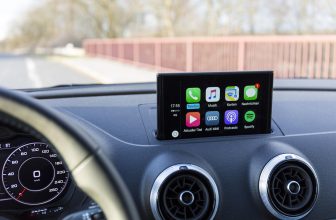
Creating a compelling presentation video is one of the most effective ways to share ideas, teach concepts, or showcase products online. Whether you’re a student preparing a project, a business professional delivering a pitch, or a content creator recording tutorials, screen recorders have made the process easier and more accessible than ever.
With the right tools, structure, and strategy, you can transform a basic presentation into a polished, engaging video that captures attention and communicates your message clearly. This blog explains how to make a great presentation video with a screen recorder, from planning to production.
1. Understand What Makes a Great Presentation Video
A great presentation video goes beyond simply recording your slides. It effectively blends visuals, narration, and flow to tell a story or explain a concept. The key elements include:
- Clarity – The message should be easy to follow.
- Visual appeal – Use graphics, animations, and transitions wisely.
- Professional audio – Clear sound enhances credibility and engagement.
- Engagement – Keep the pace dynamic and include personal touches, like webcam commentary or storytelling.
Before recording, ask yourself: What do I want my audience to take away from this video? The answer will guide your tone, structure, and content.
2. Choose the Right Screen Recording Software
Selecting the right screen recorder can make or break your presentation quality. The ideal tool should offer smooth recording, annotation features, and easy editing options.
Some popular screen recorders include:
- OBS Studio – Free, open-source software perfect for detailed presentations.
- Camtasia – A professional tool with built-in video editing and templates.
- Loom – Great for quick business presentations with webcam overlays.
- ScreenPal (formerly Screencast-O-Matic) – Simple and effective for educators and trainers.
- ShareX – A free, lightweight option for advanced users.
When choosing, consider your purpose: if you’re aiming for a polished, branded look, pick a tool that allows editing, transitions, and logo placement.
3. Prepare Your Content and Visuals
A good presentation starts long before you hit the record button. Structure your content logically and design visually appealing slides.
Tips for effective slides:
- Limit text per slide – use short, impactful bullet points.
- Include high-quality images, charts, and infographics.
- Maintain a consistent color scheme and typography.
- Use animations sparingly, too many can distract viewers.
Prepare a script or outline for your narration. Having clear talking points helps you stay focused and eliminates unnecessary pauses or filler words.
4. Set Up Your Recording Environment
A clean, quiet recording environment is essential for professional results. Follow these steps before recording:
- Lighting: If you’re using a webcam, make sure your face is well-lit. Natural light or a ring light works best.
- Background: Choose a tidy, uncluttered background or use a virtual one if your recorder supports it.
- Sound: Use a good-quality microphone to avoid muffled or noisy audio. Test sound levels before starting.
- Desktop: Close unnecessary apps or notifications to avoid distractions and screen clutter.
Doing a quick test recording ensures that both video and audio settings are optimal.
5. Record with Confidence
Once everything is ready, it’s time to start recording. Here’s how to do it effectively:
- Warm up your voice – Speak clearly, with energy and enthusiasm.
- Engage your audience – Talk as if you’re speaking directly to them.
- Use the webcam wisely – A small webcam overlay can make your presentation more personal.
- Pause and restart when needed – Mistakes happen; you can trim them later.
- Use on-screen tools – Highlight key points with annotations or pointer tools to direct attention.
Pro Tip: Record your presentation in sections. It’s easier to edit shorter clips than redo the entire video if an error occurs.
6. Edit for Flow and Engagement
Editing is where your presentation truly comes to life. Most screen recording tools have built-in editing features that let you cut, merge, and enhance your footage.
Editing essentials:
- Trim out long pauses, errors, or repetitive segments.
- Add smooth transitions between slides or clips.
- Include intro and outro sections for a professional touch.
- Insert text overlays or callouts to emphasize key information.
- Adjust audio levels so narration and background sound balance well.
You can also add background music, but make sure it’s soft and doesn’t overpower your voice. Choose royalty-free tracks if you plan to share the video publicly.
7. Add Branding and Professional Touches
If your presentation represents a business or personal brand, include your identity elements to enhance recognition.
Add:
- Logo watermarks on the corner of the video.
- Consistent color palette aligned with your brand theme.
- Branded intro/outro slides with titles, names, or contact info.
These small details elevate your presentation and make it look cohesive and professional.
8. Optimize Video Quality
Once editing is done, focus on exporting the video in the best possible quality for your target platform.
Recommended settings:
- Resolution: 1080p (Full HD) or higher for clarity.
- Frame rate: 30 fps is sufficient for presentations.
- Format: MP4 (widely compatible and compresses well).
If uploading to YouTube, Vimeo, or a learning management system, check each platform’s upload guidelines for optimal performance.
9. Rehearse and Get Feedback
Before sharing your presentation, watch it from start to finish. Look for pacing issues, awkward transitions, or unclear segments.
Ask a colleague or friend for feedback:
- Does the message make sense?
- Is the audio clear?
- Are there any distracting elements?
Constructive feedback helps you polish your video and avoid common presentation pitfalls.
10. Publish and Share Your Presentation
Once you’re satisfied with the final version, it’s time to publish. Depending on your goal, you can:
- Upload to YouTube or Vimeo for public sharing.
- Post on LinkedIn or company websites for professional audiences.
- Share via Loom, Google Drive, or Dropbox for private access.
- Embed on educational platforms or e-learning portals for training purposes.
Include a compelling title, thumbnail, and description to attract viewers. Add subtitles or closed captions if possible, it increases accessibility and engagement.
11. Tips for Continuous Improvement
Creating presentation videos is a skill that improves with practice. Keep refining your approach by:
- Watching tutorials and professional examples.
- Experimenting with new tools or visual effects.
- Analyzing viewer feedback and engagement statistics.
Over time, you’ll develop a natural flow that makes your presentations more dynamic and memorable.
Conclusion
Making a great presentation video with a screen recorder doesn’t require expensive equipment or professional studios, just the right planning, tools, and technique. By focusing on clarity, storytelling, and visual appeal, you can turn ordinary slides into a compelling, high-impact presentation that captivates your audience.
Whether you’re recording for education, marketing, or internal communication, remember: your delivery and authenticity matter more than perfection. With consistent practice and creativity, your presentation videos will not only inform but also inspire.








